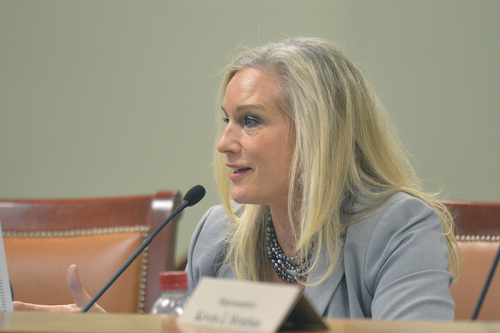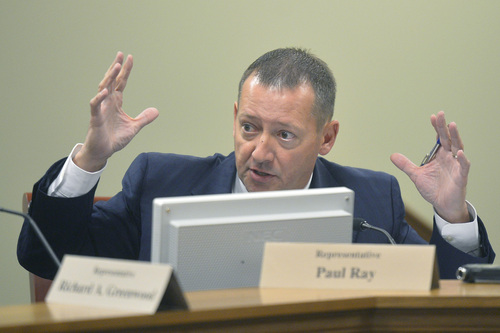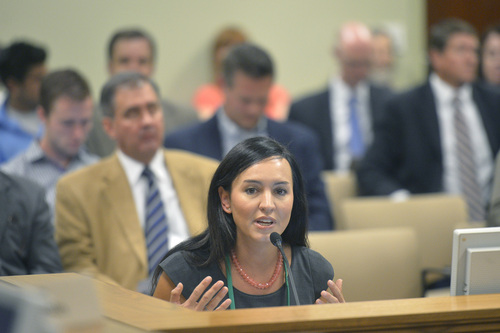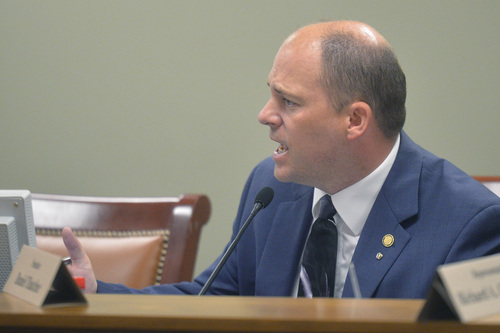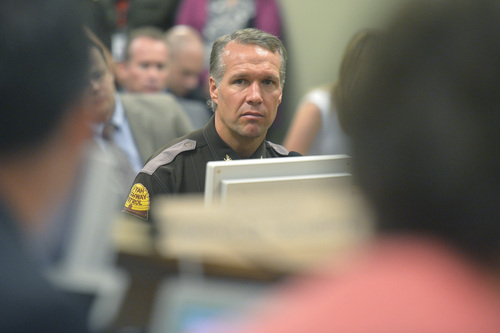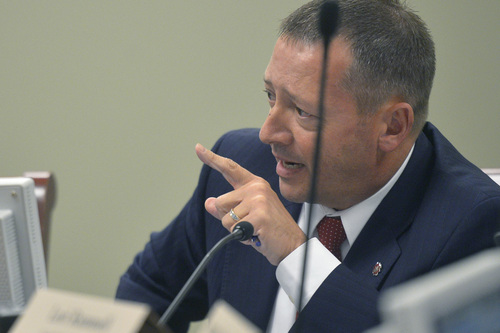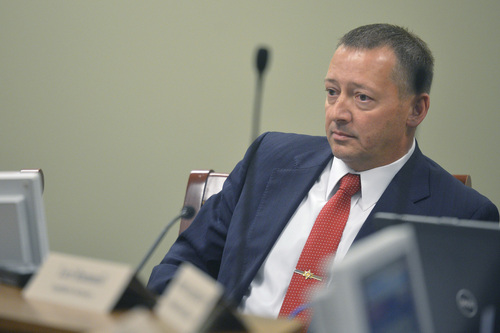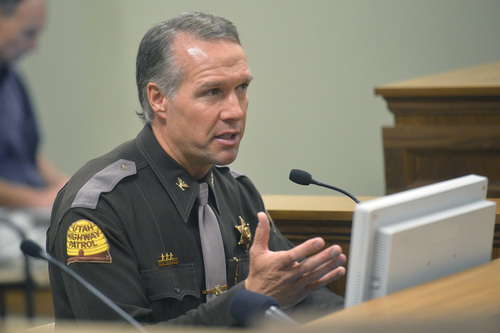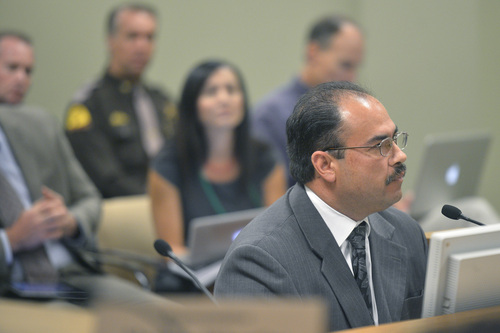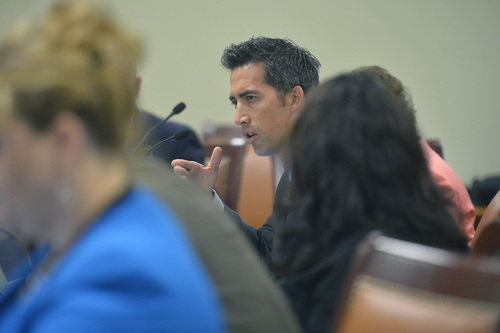This is an archived article that was published on sltrib.com in 2014, and information in the article may be outdated. It is provided only for personal research purposes and may not be reprinted.
Two Utah legislators on Wednesday defended local police using surplus military weapons and equipment obtained through a federal program.
The legislators were responding to Marina Lowe, a staff attorney for the American Civil Liberties Union of Utah. She told lawmakers during a hearing at the Capitol the weapon transfers, called the 1033 Program, were helping to "militarize" local police by giving them what "war fighters" use to combat an enemy.
The Department of Defense requires police forces to use the equipment within a year of receiving it, Lowe said.
"When you're in your community, the people you're serving are not your enemy," Lowe said.
Those assertions angered Rep. Paul Ray and Sen. Daniel Thatcher.
"How many times have you ridden with police?" Ray asked Lowe. "How many times have you ridden with the gang task force?"
"When you have gang members out there using AK-47s, you have to be able to match that firepower," Ray told Lowe.
Ray pointed to the Feb. 28, 1997, North Hollywood shootout between the Los Angeles Police Department and two bank robbers wearing body armor. The shootout is frequently used as an example of why police need rifles and armor.
Thatcher told Lowe he rejected the idea Utah police view the public as the enemy. He said the bigger issue is police officers are prohibited from speaking about what happened immediately after they shoot someone, and in the absence of information, people speculate.
"I've never seen a newspaper article that says, 'These officers did a fantastic job today,'" Thatcher said.
Lowe clarified she was not discussing any specific incidents in Utah; she was referring to what the ACLU has identified as nationwide trends.
Lowe proposed state and local lawmakers create an agency to oversee the 1033 Program, monitor police tactics and field citizen complaints.
Rep. Dana Layton, R-Orem, told Lowe and her colleagues that she worries about aggressive police raids but thinks the 1033 Program is good.
Layton told a story about how in the late 1990s, her husband happened to be cleaning his M-16 rifle when police chased a bank robber into her dead-end street in Orem. The robber was armed, Layton said, and an Orem police officer had only a pistol.
Layton's husband ran his M-16 to the police officer. The officer who accepted it was prepared to use it, Layton said, though the suspect was eventually arrested without gunfire.
"I think it's great that police with limited budgets have access to get what they need," Layton said.
The 1033 Program has supplied law enforcement in Utah and across the country with weapons, vehicles and surplus gear such as backpacks and emergency blankets. The weapons and vehicles are permanently loaned to police while other gear becomes the police officers' property after one year. The weapons and vehicles have drawn particular attention since protests in Ferguson, Mo., during the summer.
Wednesday's hearing by the Law Enforcement and Criminal Justice Interim Committee began with a presentation by Dan Martinez, a state employee who coordinates between Utah police and the Department of Defense office that manages the 1033 Program. Legislators in the room asked basic questions about the program. None criticized it and none suggested any legislation that would impact it.
The hearing's final witness was Utah Highway Patrol Superintendent Daniel Fuhr. He said he understood why Lowe had her perspective, saying no one has ever shot a gun at her and she had never had to pursue a dangerous suspect.
UHP has 250 M-14 rifles and one mine resistant ambush protected vehicle, known as an MRAP.
Before the MRAP, troopers had an old armored personnel carrier that frequently broke down.
"When the MRAPs became available, we jumped on them immediately," Fuhr told legislators.
The MRAP has been in service since February and deployed just once, Fuhr said. That was when suspects stole a recreational vehicle and were driving on Interstate 15. Police were worried the thieves had guns. The episode ended without gunfire.
As for the M-14s, Fuhr says UHP has them in storage and has been trying to return them for a year. The Defense Department, Fuhr said, has told UHP it does not have a mechanism to retake possession of them.
The M-14s are too long and have become obsolete, Fuhr said. He said UHP instead paid $650,000 of taxpayer money to arm troopers with M-4 rifles.
Fuhr asked legislators to do nothing that would limit the equipment police use. Fuhr said he and peace officers are willing to be held accountable if they misuse the equipment they have.
"But don't create fear in the lives of men and women who respond" to reports of violent crime, Fuhr said.
The 1997 North Hollywood shootout ended when one robber, already wounded, killed himself during the shootout. Police officers shot and killed the other robber. Eleven police officers and seven civilians were injured.
Twitter: @natecarlisle



